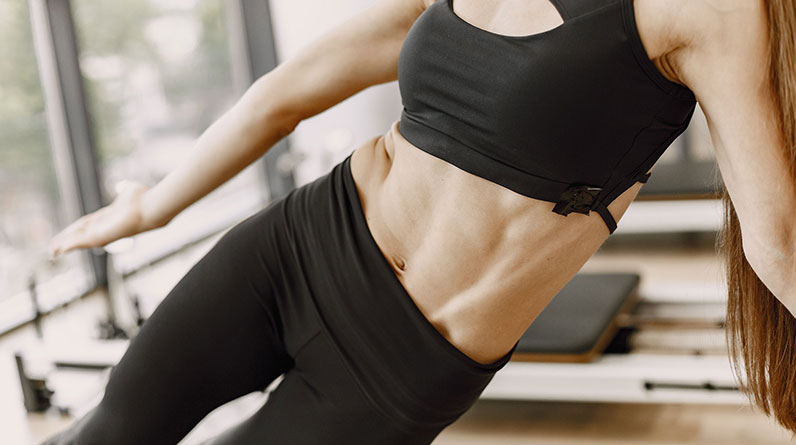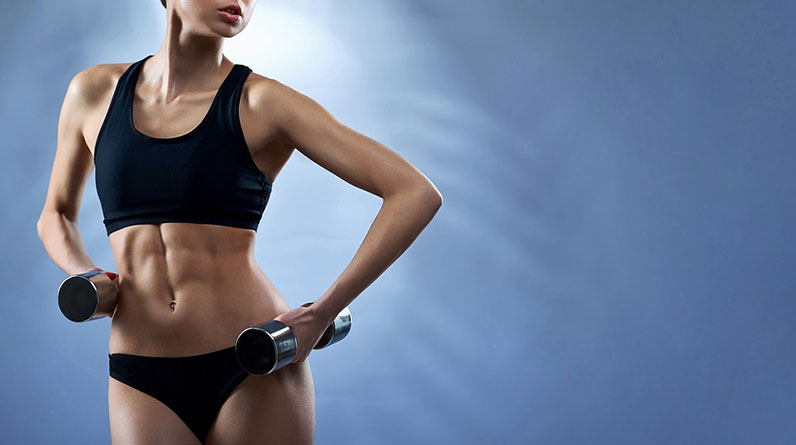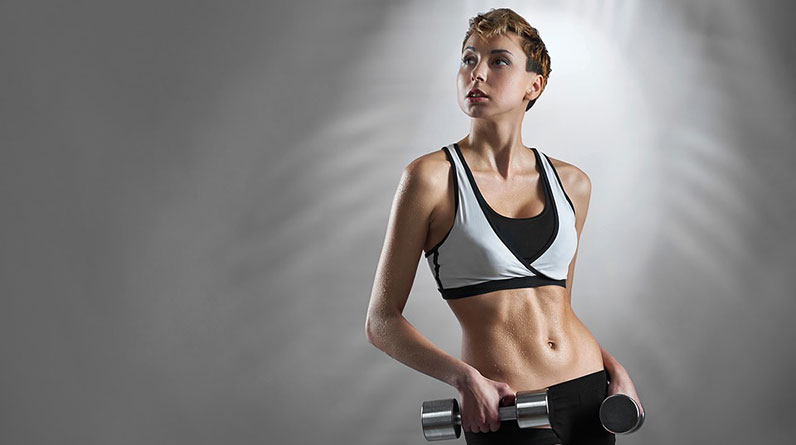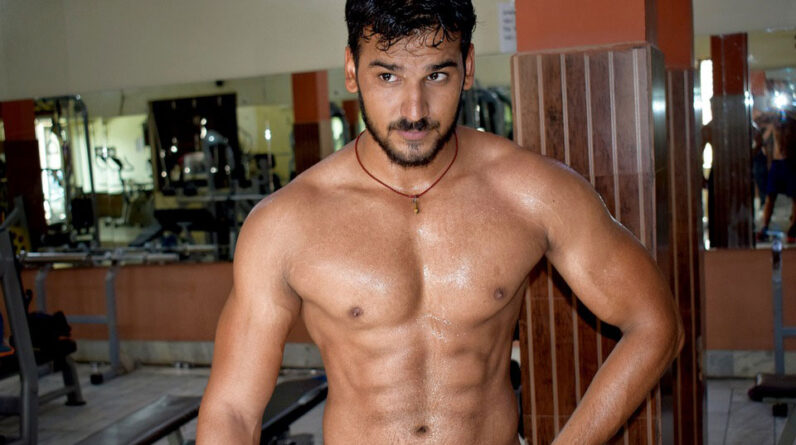
The Science of Building Six-Pack Abs
There’s a lot more to building six-pack abs than just doing crunches. The right training balance, nutrition and proper recovery all play a role in developing defined abs.
While it’s not always easy, a six-pack is a great fitness goal for those who are dedicated to training and eating smart!
Abdominal Muscles
If you want to know how to build six-pack abs, you need to understand the anatomy of your abdominal muscles. There are a few different types of muscles in your core, each playing a unique role.
The rectus abdominis is the main muscle that gives a person’s abs their coveted “six-pack” appearance. This is the largest and strongest of all your abdominal muscles.
It flexes and tightens your spine, helping to support your body’s weight. It’s also used for other activities, such as breathing and biking.
There are also other important muscles that make up your core, including the internal and external obliques, the transversus abdominis, and the pyramidalis. These muscles are located on each side of your abdomen and contribute to keeping your trunk stable.
These are all essential for a variety of everyday tasks, from walking and standing to carrying groceries or even just sitting at your desk at work. They work together to help you stay in place, so don’t neglect your core muscles when working out and improving your fitness.
You can train the obliques and other abdominal muscles by performing exercises that work each of these specific areas. Exercises such as crunches, planks, mountain climbers, and hanging ab curls all work the obliques and can help you to lose fat and tone your core.
The best way to get strong abs is to combine a healthy diet with an effective workout routine. This means consuming less calories than you burn, cutting back on junk food, and exercising regularly.
You may also try exercises that work the obliques, such as pull-ups, dips, and planks. Cardio, such as running or HIIT (high-intensity interval training), also helps to burn calories.
Oblique Muscles
Oblique muscles are located along the sides of your abdominals and they work with your rectus abdominis muscle (also known as the six-pack muscles) to perform trunk flexion. These muscles also assist in lateral flexion and rotation.
Oblique strength is key for a strong core, which is necessary for a solid lift. A weak core is not only unbalanced but can make you prone to back pain.
To develop oblique strength, you need to train them with a variety of exercises. This will help them to grow stronger and prevent injury.
The oblique muscles can be divided into two groups: the external and internal obliques. The external obliques are the outermost fibers that run diagonally across your midsection, forming a “V” shape. They insert at the lower eight ribs and the iliac crest.
Another important oblique muscle is the transversus abdominis. This paired muscle lies under the internal oblique and has horizontal fibers that run from the seventh to the twelfth ribs, the iliopectineal fascia, and the front of the iliac crest.
A strong oblique muscle can help reduce low-back pain by taking the pressure off your vertebrae and discs. It also helps to stabilize the spine and protect it against sudden force.
It is also important to develop oblique strength in order to reduce the risk of developing scoliosis or other abnormal curvature of the spine. The oblique muscles also protect the spinal cord and nerves.
A strong oblique muscle will not only increase your core strength, but it will also increase your body’s ability to resist side-to-side movement and rotation. This will help you to avoid slouching, which is one of the primary causes of back pain. It will also allow you to lift heavier weights without experiencing unnecessary strain on your tendons, ligaments or vertebrae.
Back Muscles
The back muscles cover a broad range of the spine (cervical vertebrae, lumbar vertebrae, sacrum, and coccyx). They move your head, shoulders, arms, hips, legs, and spinal column.
The most visible muscles in your back are the abs, which form the so-called “rectus abdominis.” But these muscles don’t function alone; they work in tandem with a group of other so-called core muscles, including the obliques.
These muscle groups help support the weight of your body and make sure that the joints are aligned properly so that the entire body moves smoothly. They also help keep your spine healthy and strong, reducing the risk of back pain.
Muscles in the back can be categorized into three layers: deep, intermediate, and superficial. The muscles in the deep layer are located deeper in the spinal cord. These muscles have special functions and are innervated by nerves in your spinal cord.
In the intermediate layer, muscles are a little closer to the surface. These muscles are often used to perform simple movements, such as walking or lifting a light object.
When you lift a heavy object, these muscles can be damaged. In this case, you need to pay attention to your technique and use the proper form to prevent injury.
The back muscles that help to bend and extend the spine are called erector spinae muscles, and they are found in both the upper and lower back. They are innervated by the spinal nerves in your spine, so they help you breathe and control your posture.
Leg Muscles
Your leg muscles work together with your bones, tendons, and ligaments to help you walk, run, jump, stand on your toes and flex your feet (lift your toes up toward your knee).
Muscle groups in the upper and lower legs provide power when you push off into a sprint or jump. Each group has different functions.
Anterior muscles are located in the front of your lower leg and allow you to lift and extend your foot when walking or running. They also stabilize your foot and move it from side to side.
Posterior muscles are located in your lower leg and help you bend and extend your thigh. They also help you absorb force when you land after a sprint or jump.
The quadriceps, or “quad” muscles, are the largest muscle group in your body. This group consists of four muscles: vastus lateralis, medialis, vastus intermedius, and rectus femoris.
They start at your pelvis and femur and then move down to your patella (kneecap) and tibia (shin bone). The quadriceps contract when you push off or jump, helping you straighten your knees and draw your hips inward toward your chest.
These muscles are used in all sports, including track and field events (running, hurdles, long jump), football and basketball. They can be injured when they’re overworked.
Glutes are located on the back of your thigh, forming the buttocks. They are powerful hip extensors but also hip abductors — spreading your thighs apart. They are the most common muscle strains among people who participate in high-speed sports, such as football and basketball.
They contract quickly, which can lead to injury during a hard run. A strong hamstring exercise, such as the seated calf raise, can help you prevent this.
Arm Muscles
If you want to look and feel your best, it’s important to focus on building strong arm muscles. They’re essential for making it easier to tote luggage, throw a ball or swing a tennis racket, and they also promote long-term bone health.
There are four main muscles in your arms: biceps, triceps, and forearm flexors and extensors. These muscles help you do many things, like straightening your elbow, raising your arms above your head and push-ups.
Your biceps muscle is in the middle of your upper arm, just beneath the surface of your skin. The triceps is on the back of your arm, just above your elbow.
These muscles work together to form your biceps and triceps brachii, which are the two main muscles that extend your elbow. They also work to stabilize your shoulder joint, allowing you to adduct (move) and depress (pull) your arm.
Each of these muscles attaches to a bone in your arm or shoulder, and they all receive their blood from tendons (soft tissues) that connect them to the bones.
When you contract your arm muscle, it pulls the tendons and the bone. Having stronger arm muscles can help you avoid injury from heavy lifting, and they can make it easier to do daily tasks, like washing dishes or using a phone.
You can build these muscles in a variety of ways. Cardio, weights, and bodyweight exercises all help.
Bodyweight exercises such as planks and push-ups are a great way to work out your arm muscles without the extra equipment. They aren’t as intense as curls or kickbacks, but they work the muscles in your arms just as effectively. They also engage your core, which is a key part of building six-pack abs.




